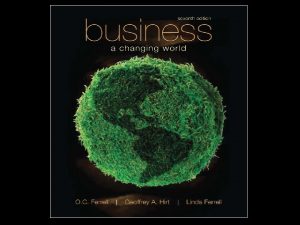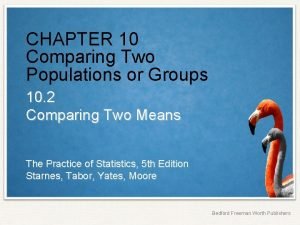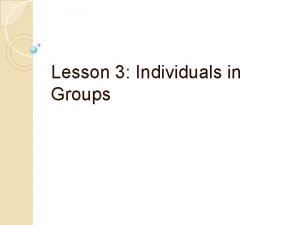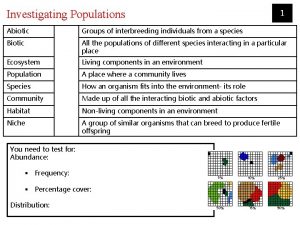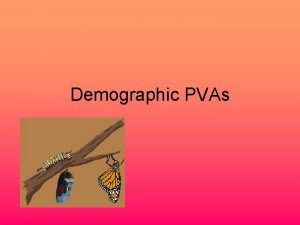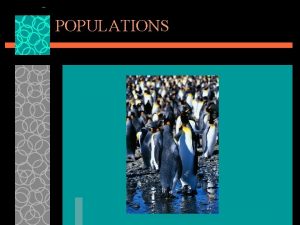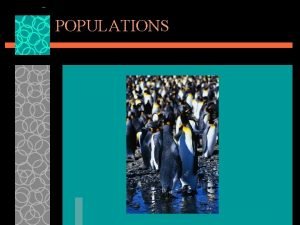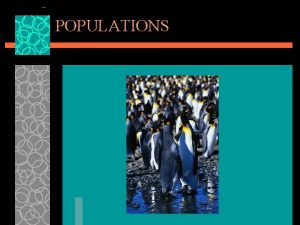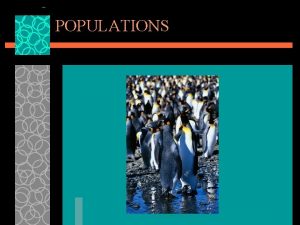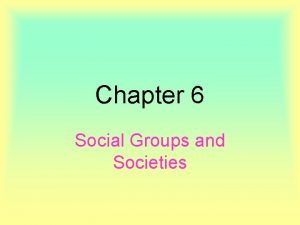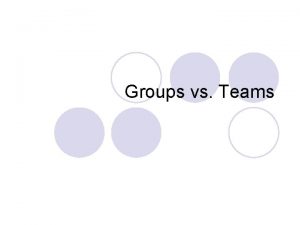Populations Populations Populations are groups of individuals that
















- Slides: 16

Populations

Populations • Populations are groups of individuals that belong to the same species and live in the same area • There are three important characteristics of populations…

Population Characteristics • Geographic Distribution – – what area does the population inhabit? • Density – – # of individuals concentrated in the area • Growth Rate – – how slowly or quickly a population grows

Population Characteristics • Three factors affect population size: – The number of births – The number of deaths – The number of individuals that enter or leave

Immigration versus Emigration

Population Growth • Exponential Growth – when individuals of a population reproduce at a constant rate. – Occurs only under IDEAL conditions – J-curve plot



Population Growth • Logistic Growth – when growth slows or stops following exponential growth – Occurs when resources become less available – Looks like an “S”- shaped curve


Carrying Capacity… • the maximum amount of individuals of a population that an environment can support. – Generally when birthrate = deathrate

Limiting Factor (LF) • Affects an organism’s ability to survive and causes population growth to decrease – What are some examples?

Limiting Factor (LF) • Density DEPENDENT – factors that depend on population size – Competition (resources can become scarce) – Disease: some examples include Pfisteria, Dutch elm disease, AIDS – Predation – Parasitism


Limiting Factor (LF) • Density INDEPENDENT – factors that affect all populations regardless of size • Ex. Natural disasters, weather, human actions, forest fires, etc.

Limiting Factor (LF) • Most populations can adapt to a certain amount of change, but major upsets can lead to long-term declines in population sizes… – What might be the outcome of this?
 Insidan region jh
Insidan region jh Individuals don't evolve populations do
Individuals don't evolve populations do Individuals groups and institutions
Individuals groups and institutions The activities that independent individuals groups
The activities that independent individuals groups Thơ thất ngôn tứ tuyệt đường luật
Thơ thất ngôn tứ tuyệt đường luật Tôn thất thuyết là ai
Tôn thất thuyết là ai Ngoại tâm thu thất chùm đôi
Ngoại tâm thu thất chùm đôi Chiến lược kinh doanh quốc tế của walmart
Chiến lược kinh doanh quốc tế của walmart Gây tê cơ vuông thắt lưng
Gây tê cơ vuông thắt lưng Block nhĩ thất độ 2 mobitz 2
Block nhĩ thất độ 2 mobitz 2 Tìm vết của mặt phẳng
Tìm vết của mặt phẳng Sau thất bại ở hồ điển triệt
Sau thất bại ở hồ điển triệt Thể thơ truyền thống
Thể thơ truyền thống Con hãy đưa tay khi thấy người vấp ngã
Con hãy đưa tay khi thấy người vấp ngã Chapter 10 comparing two populations or groups crossword
Chapter 10 comparing two populations or groups crossword Chapter 10 comparing two populations or groups
Chapter 10 comparing two populations or groups How are ethnic groups and religious groups related
How are ethnic groups and religious groups related



